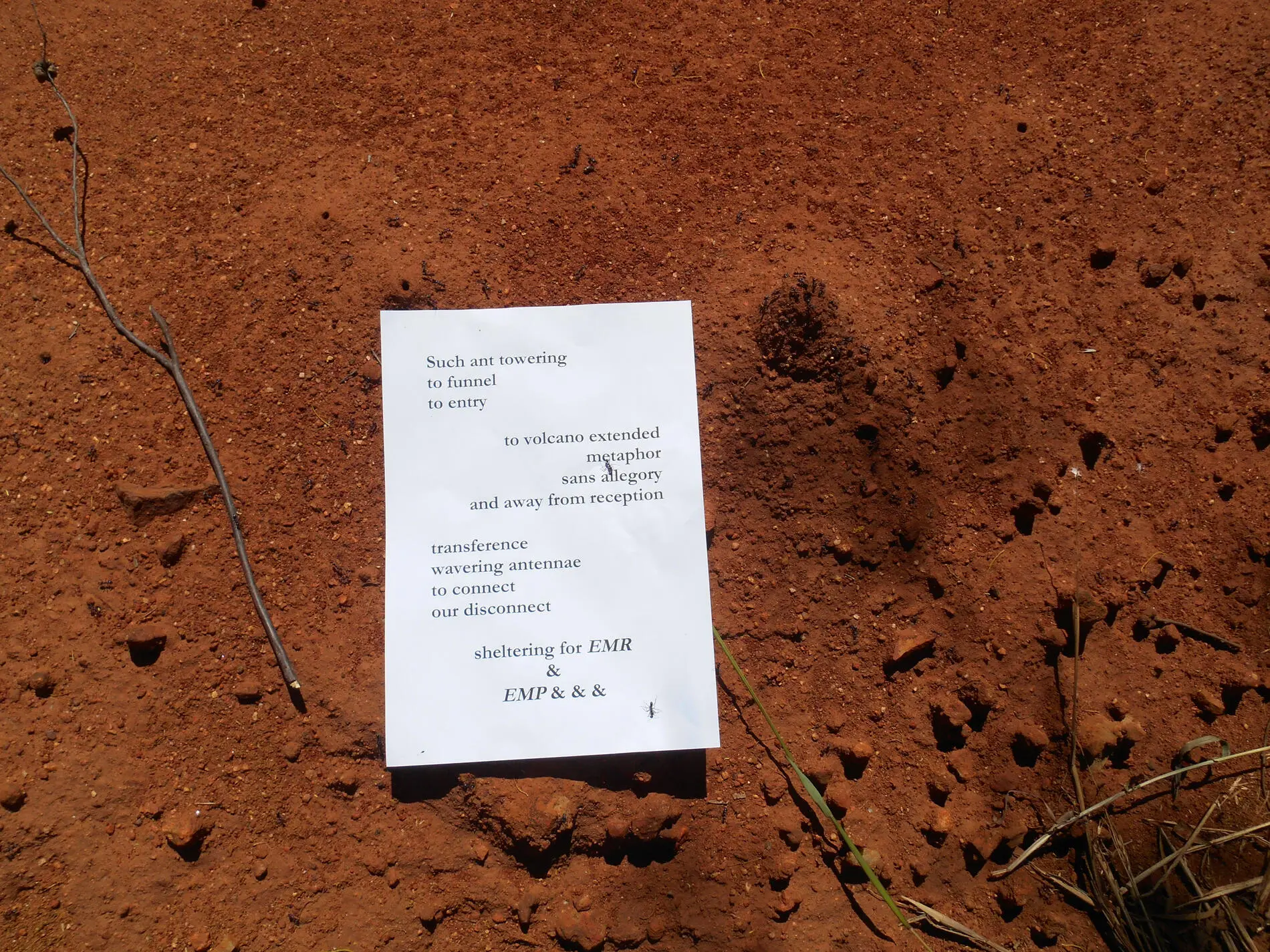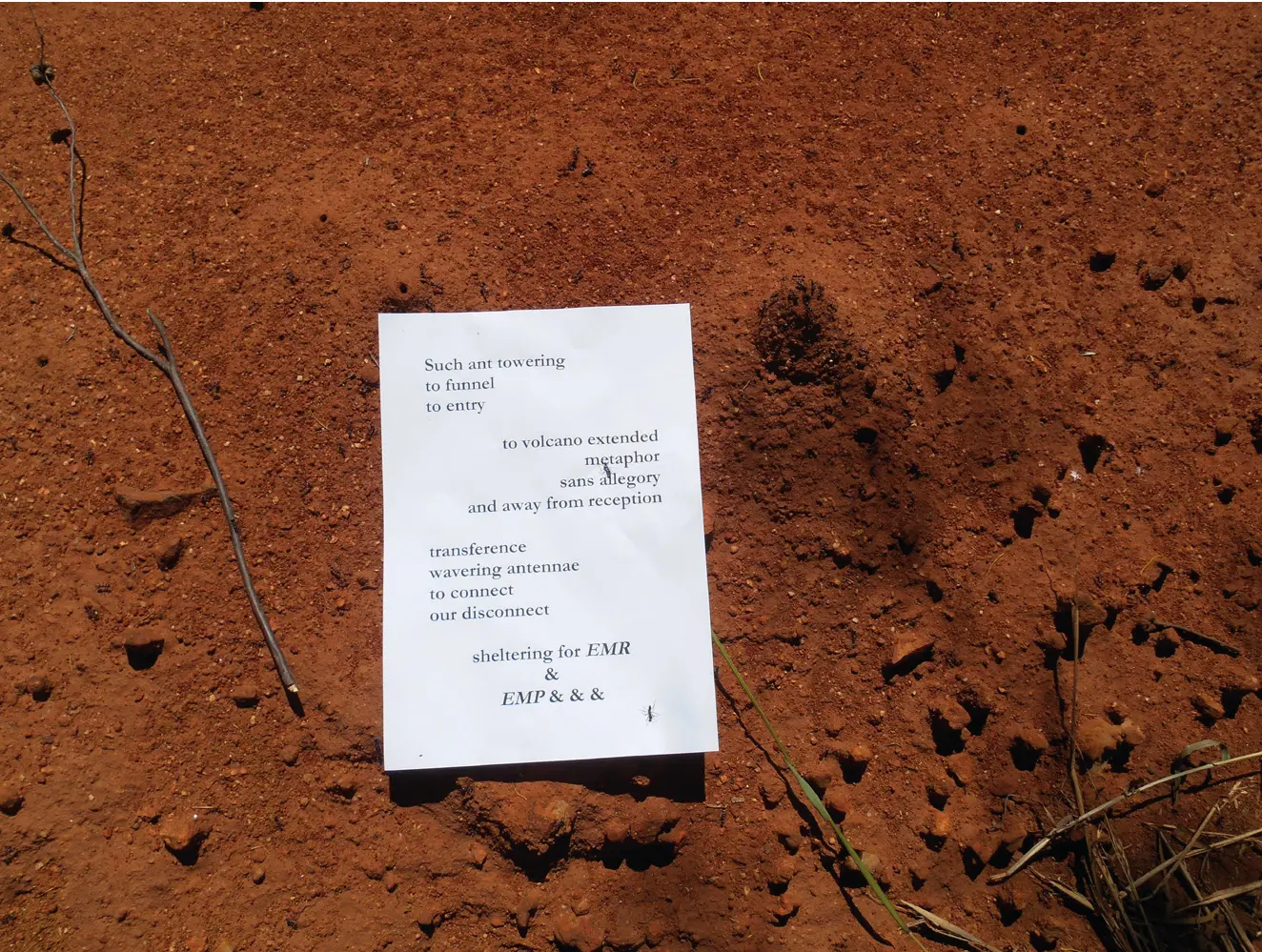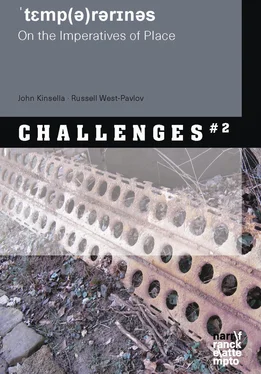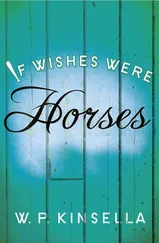
Poetry is not only where I articulate my witnessings, but actually how I amplify my protests beyond my self. I am a vegan anarchist pacifist—a self-definition of fact some people find annoying—but I feel it necessary to declare this so people understand (if not appreciate) that there’s a thought-out position, a coherence to what I am trying to do. All words have variable meanings, and so do all actions. We need to think coherently about how we are activists. To do a single activist action because one has a rush of adrenaline is not going to help the present (or the future). But to think it out carefully, ‘craft’ (a word I have problems with—another story!) our actions like we do a poem or a story, can be long-term generative. It helps to be aware of all the possible contradictory readings our actions might engender—such awareness can help make our actions and poems potent tools for long-term and permanent positive change.
And change is now . We are in an endgame, which still actually means—to use a disturbing gaming metaphor—that we have not lost. I do not think in terms of winning—winning is what crushes others—but rather of not losing to the forces of consumerist, military, state and corporate oppression. Is that a stalemate? Maybe, but only because the damage to the world’s house has been so extensive now—peak destruction has been reached. What we ‘save’ won’t be the same as what has been lost—there will sadly be less ‘old-growth’, but there can be expansive new growth . Stop the damage now, and what has been damaged, where possible, let’s replant.
This is what’s happening at Beeliar. The Roe 8 horror seems to be at an end—the malice behind it thwarted by vast, collective action—but now the replanting. The house needs to breathe something other than diesel and asbestos fibres, the birds need to return even though it will take decades to ‘repair’.
For a few years now, I have been writing poems based on the mythological Irish figure, Sweeney, who was cursed, sent mad and turned into a bird after killing a psalmist of the Bishop Ronan (who had been offended by Sweeney prior to this killing and had already cursed him). Sweeney, so altered, sees the world differently—or struggles to. In his ‘mad’ bird form he is a visionary, and in my ‘version’ struggles towards social and ecological awareness.
And Sweeney has been there through the Beeliar and many other protests for me. He’s a strange colonising (as the Irish were colonised and have been colonisers) and decolonising figure at once—he’s not one thing or the other, but he is . He sees . He knows his own stupidities and weaknesses, and he sees corruption clearly. Every word that comes out of his ‘madness’ (madness is clarity in so many ways!) is measured and often found wanting. He slips across time—the past is his future. He is aware of how he inadvertently appropriates culture and desperately works to prevent this happening. He acknowledges cultural difference; he deeply respects the elders. And this is his final Beeliar moment, maybe:
Having Given Up the Ghost, Sweeney Flies in With Seedlings
to Help Stitch the Wound
A traumatic wound—gashed open to the bone.
But the Emperor and his Jester are up the creek
without a paddle, wading against their own effluent.
A traumatic wound—gashed open to the bone.
The spell feeding on the workers like dermonecrosis
is broken, and they disperse into healthier skin.
A traumatic wound—gashed open to the bone.
Having given up the ghost, Sweeney flies in with
seedlings of native vegetation to help stitch the wound.
A traumatic wound—gashed open to the bone.
In the sand the bushland had grown from, Sweeney
knows country is still alive and consults with the Elders.
A traumatic wound—gashed open to the bone.
It can be healed. Its essence is spilling out like a balm.
The red-tailed cockatoos are thinking of the decades ahead.
JK

Promptly on the very last day of August, the weather tips. After days of uninterrupted sun and heat, a late-evening thunderstorm announces the onset of rain. The next morning, drizzle, punctuated by stronger showers, sets in. Mist nestles in the valleys, and the tip of the Kandel is shrouded in cloud. Sheets of persistent rain, not heavy but opaque nonetheless, blur the steep outlines of the ridges. This is the seasonal shift towards autumn, we say to ourselves—forgetting how utterly changeable and erratic the weather has become: the ‘temps’, ‘tiempo’ is nothing less than temporary in its abrupt shifts from one day to the next (the ten days of sun that preceded this change has been a welcome exception to the months of moodiness before). Now, forgetting all that, we slip back into the age-old habit of reading off the seasons like a chain of rosary beads. The shift has been announced for weeks, we intone, by the first splashes of gold and russet on isolated trees in the forest. Indeed, the oak that guards the turn in the road at the bottom end of our little valley, just opposite the tavern ‘Zum Grünen Baum’ where the Griesbach flows into the Wilde Gutach, has in fact increasingly stridently played the variations on a full range of autumn colours since we arrived ten days ago.
This version of the temporality of the seasons—temporary in a sense that is anything but temporary, viewed within the large scheme of things—is itself an avatar of the timelessness of the mountain now hidden by low cloud and the grey panes of rain, now revealed through a gap in the drifting mists. At the beginning of his magisterial Stone , Cohen (2005: 3) suggests that the sheer timelessness of the mountain ‘is something more than an allegory for Edenic nature, a figure in a human story of balanced inhabitance and expansive earthly interconnections. ... Climb a mountain to seek a vista and its native prospect will give you ontological vertigo. To think like a mountain requires a leap from ephemeral stabilities, from the diminutive boundedness of merely human tales.’
Yet we are slowly beginning to appreciate the temporalities of such entities as mountains, from the wrong end, as it were, as we see the glaciers melt. A narrative of the nefarious effects of human activity upon the global environment now includes the thawing of these immense ice reservoirs as global warming proceeds apace. For millions of rural inhabitants in India, for instance, the thawing of the Himalayan glaciers, which function as immense water-storage receptacles and water-supply regulators, means more erratic patterns of water availability, with catastrophic consequences as droughts alternate with floods (Ghosh 2016: 89-90). (And those issues do not even approach the threat emanating from the Artic ice cap as it melts in ever accelerating cycles of feedback that see the thaw reaching into the coastal shelf seabed, realeasing methane plumes into the atmosphere—or even methane flares that signal the onset of an even more aggressive rise in global warming rates [Wadhams 2017]).
But as we come at this problem of cosmic proportions from another angle, we may discover an ongoing mode of natural agency that continues unabated. For the native Americans of the Alaskan and Canadian circumpolar North, ‘glaciers take action and respond to their surroundings. They are sensitive to smells and they listen. They make moral judgements and they punish infractions. ... Glaciers also enter accounts left by early North Atlantic visitors who wrote with a different idiom and brought distinctive environmental visions to their interpretations’ (Cruikshank 2005: 3). What happens when we shift from the environmentally aware but still precariously anthropocentric North Atlantic frame of reference to the posthuman frame of reference that envisages glaciers as actors, almost as slow as mountains but not quite, and today gradually limbering up for an accelerated and bad-tempered mode of actantial intervention in the globally warming world? The seasons change according to their customary, age-old rhythm, do they not? And the Kandel stands, sometimes visible, sometimes shrouded in cloud—but what if the Kandel were burning, and slowly melting away in a wilful exercise of its own hitherto dormant agency?
Читать дальше














